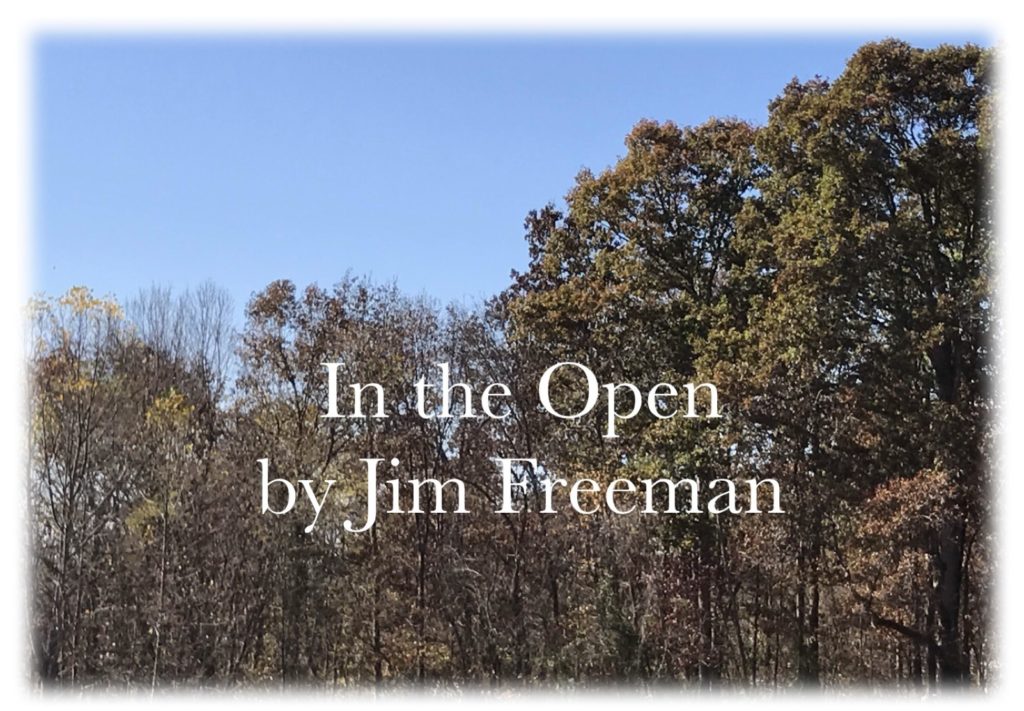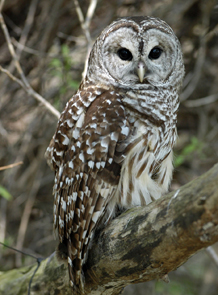Owl listening and watching season just getting started


While bird-watching season may be long past, owl season is just getting started.
A few weeks ago, we noticed this peculiar sound coming from the vicinity of the Woodline over on our neighbors’ property, more specifically it was around dawn and dusk.
It sounded almost like a cat meowing, or the last note of a catbird’s call – you know, that harsh, sharp, almost angry “Meow!” sound. Although it sounded vaguely feline, we suspected it was something else mainly because the dogs paid it absolutely no mind.
Our primary suspect was that it was some sort of owl. I’m particularly fond of listening for owls, mainly because I love that twilight time at dawn and dusk when you are likely to hear them. I call that time “shift change” as the diurnal birds call it a day, and the night birds and amphibians take over singing duties.
Several species of owls, namely the Eastern Screech Owl, Barred Owl, Great Horned Owls, and even Saw Whet Owls are no strangers to our little corner of the world, however this was one that I hadn’t heard before.

Using a free bird ID app (Merlin Bird ID by The Cornell Lab) on my phone, I looked for those owls that are known to reside or migrate through southeastern Ohio and soon came across the Short-eared Owl. Playing the owl’s call on my phone quickly confirmed that our crepuscular visitor was indeed a Short-eared Owl.
The Short-eared Owl (Asio flammeus) is an Ohio species of special interest but is listed as a species of “least concern” over its entire range – which includes every continent except Australia and Antarctica. It is a raptor, or a bird of prey, and therefore “cool” – Far Side fans may get the reference to “Birds of prey know they’re cool.”
It is a medium-sized owl, falling squarely size-wise between the more-familiar barred and screech owls, and as its name suggests has short, barely visible feathered tufts or “ears” or on its head. It is tawny brown in color with a barred tail, and heavily streaked with darker feathers.
Unlike most owls, the Short-eared Owl is known to hunt at dawn and dusk, and even during the day – perhaps in relationship to its favored meal, the vole. Although I did not get to see it during the day, the species is known for flying low over the ground, in an erratic, fluttering, moth-like manner. It is also known for rarely vocalizing away from its breeding grounds, so I was fortunate to get to hear it.
The Short-eared Owl is only an occasional visitor to southern Ohio, although several have been known to nest along Lake Erie, so it was a bit of a treat to hear it mornings and evenings while it was in the neighborhood (although the local meadow voles may have disagreed).
If you enjoy owls, now is the time to start listening for them – particularly Great Horned Owls; while other birds are finished raising young or heading south, these owls are just beginning to stake out their territories for breeding in late fall or early winter.

Why do they breed so early? Perhaps it is to give their young a head start for learning to hunt in the spring when prey is more abundant. One thing that is for sure though, it is easy to hear them calling on the cold, still, winter nights.
Some of my best owl listening (and watching) has been while I was sitting on a deer stand in the pre-dawn darkness, waiting for the sun to come up. There’s nothing like sitting 20 feet up a tree having an owl come swooping down to a landing nearby, but I might suggest bundling up the kids and going out to listen for owls after sunset – and bring hot chocolate.
Jim Freeman is the wildlife specialist for the Meigs Soil and Water Conservation District. He can be contacted weekdays at 740-992-4282 or at [email protected]








